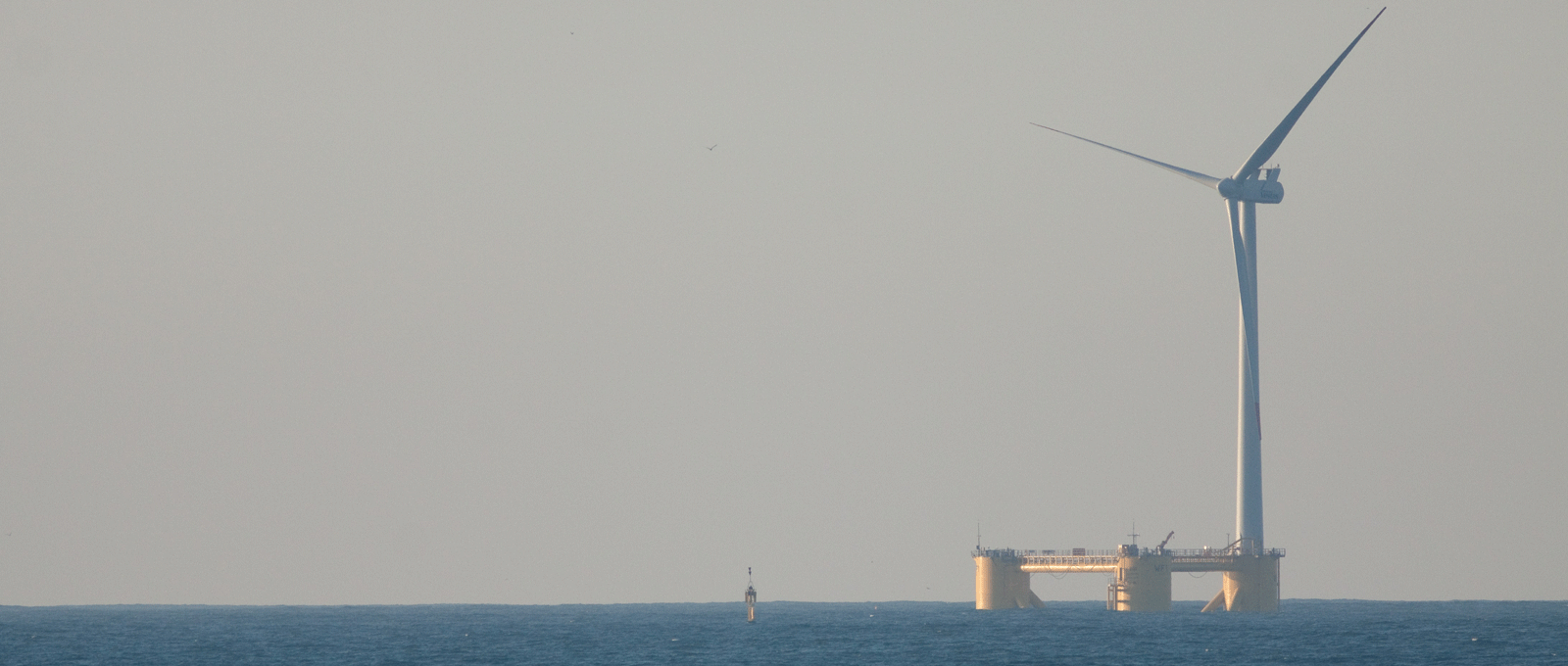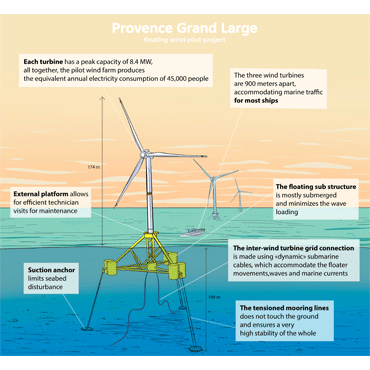Prysmian Group has completed the submarine cable manufacturing phase on the Provence Grand Large project, a floating offshore wind farm nearing completion in the Mediterranean Sea off the coast of France that will demonstrate the viability of a new solution crucial to helping European countries meet the most ambitious carbon reduction targets in the world.
Europe has been a pioneer in the offshore wind industry sector, and now has the opportunity to lead global markets in this important evolution in wind power technology. Until now, offshore windfarms could only be installed in shallow water. But when turbines are installed on floating platforms, they can be located farther out at sea, and in deeper water. The cables must be dynamic, capable of withstanding the action of waves and currents without breaking.








